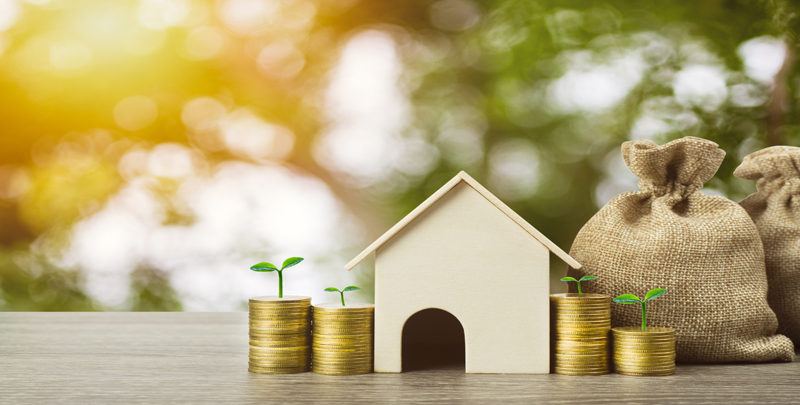While it would be nice, most property owners don’t have the funds to buy a property outright.
Hefty bank loans are par for the course, and while the monthly mortgage repayments are a necessity, there are faster avenues to build equity in your property.
That’s especially the case recently, with a larger percentage of monthly repayments now feeding higher interest rates, instead of building equity.
How does equity work for me?
Put simply, the equity in your property is the difference between its market value and your remaining home loan balance.
If you still owe $400,000 on your home loan and the market value of your home sits at $1 million, then your equity in the property stands at $600,000.
Paying back a loan is a necessity, but strong equity can also be leveraged to borrow against and make further purchases – so it definitely makes sense to increase your equity holding as promptly as possible.
Apart from diverting more of your established income to increase monthly repayments, there are a number of ways to bolster equity in a property.
Asset selection for strong capital growth
The first key to building equity in a property happens before you’ve even bought it. Asset selection is key. Well chosen properties in the right locations will achieve strong capital growth as part of broader market growth trends. This raises the property’s value, and therefore increases the percentage you own compared to the bank.
Purchasing an investment property for capital growth is different from purchasing a home for lifestyle characteristics.
There are three main factors that drive capital growth. The first is strong underlying land value. This means looking for properties in areas where land is at a premium, not readily available, and in high demand.
The second factor is the scarcity element. Properties that are not easily replicated, but are instead a finite asset class, provide strong scarcity value, which drives up values amongst buyers.
Off the plan apartments or new housing estates might be great for livability, but are abundant, which brings down demand and limits price growth.
There’s an important difference between anomalous and scarce property. Whereas an anomalous property may be rare and unusual, that may not be a positive.
Take for example a one bedroom house in an area, which is known for large family dwellings. The one bedroom house is unlikely to be a hit with a large proportion of the area’s typical buyer profile type.
Scarce properties, on the other hand, may be in demand and hard to secure for buyers, but are not necessarily unusual. For example, there are a fair amount of single fronted terrace houses in Carlton, but they are iconic and incredibly sought after. Given they are typically over 100 years old and not being built anymore, stocks are limited, so buyers must compete and pay accordingly.
Another factor is finding a property with multi-faceted demand, among different buyer profiles. This can range from families, first home buyers, investors, young professionals, down-sizers, up-sizers and developers. This multifaceted element underpins and drives up demand levels.
That means if the market suffers a downturn, and perhaps one or two of those buyer profiles are subdued, then the others will hopefully take up the slack. This helps ensure a consistent capital growth pattern.
Adding value
While market/land capital growth should be the main priority, improving a property’s value through renovations, repairs and extensions also build equity.
Generally speaking upgrading kitchens and bathrooms have the greatest impact on value, but more minimal improvements, such as upgrading floorcoverings can also make a positive difference. Owners can definitely modernise properties with limited expense, if they know where to look and where to get the greatest bang for buck.
The next step is extensions, which can be a good move, but are often a far greater undertaking, at a much higher cost. Be wary, if you’re having to take out a loan to fund the extension, then it may end up cancelling out extra equity that could have been realised.
Improving landscaping and outdoor entertaining areas can be a good option, particularly for low maintenance properties. While, for inner suburban homes, creating off-street parking can be a creative technique to add value.
In regards to apartments, transferring across from old titles, which can be hard for buyers to borrow against, can bolster property values and therefore your equity holding.
Subdividing a block of land to sell off to a potential developer also offers opportunities to increase equity.
Rezoning, while not easy, can provide significant equity rewards, if you have the required level of expertise. For example an old light industrial zone that is rezoned to residential, typically bolsters market values, especially amongst prospective developers.
Increase rental income
Increasing your rental income means you have more funds available to allocate to reducing the mortgage.
To increase the weekly rental income, you’ll most likely need to upgrade or improve the property in some form.
This can be through renovation, as we’ve touched on earlier. However, improvements to increase capital value don’t always go hand in hand increasing the rental return. So it’s important to understand what your property may lack from a renters perspective and what could boost its rental value.
We tend to find that renters focus on service areas, such as kitchens and bathrooms, so improving those can really bolster appeal.
Good heating and cooling are also important factors for rental properties.
Take home message
As interest rates rise, paying off a mortgage in good time becomes a greater consideration.
By building equity, not only do you give yourself the best opportunity to reduce debt, but it also provides leverage to create further investments and wealth creating opportunities.

